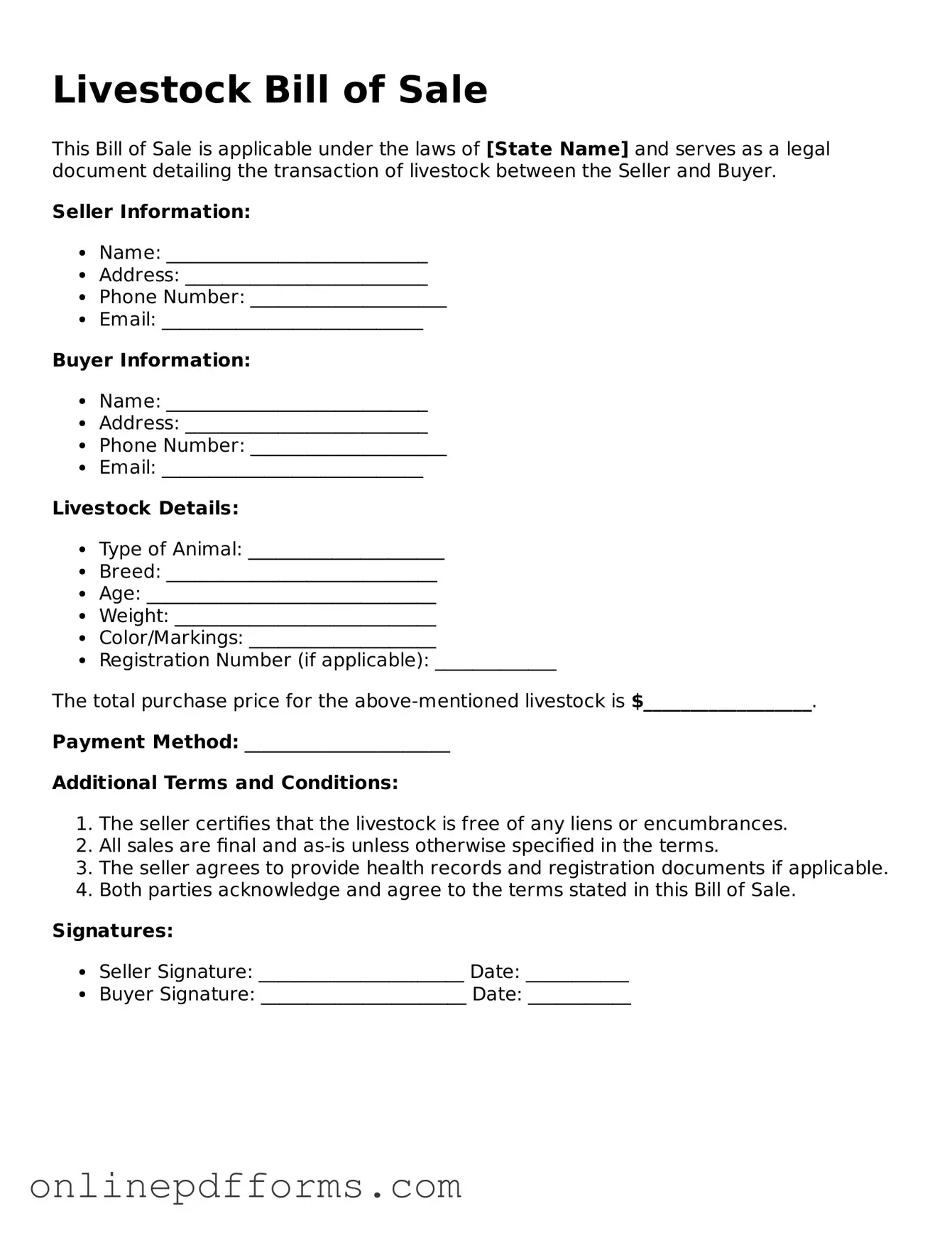The Bill of Sale for personal property is a document that serves a similar purpose to the Livestock Bill of Sale. Both forms are used to transfer ownership of an item from one party to another. They include essential details such as the names of the buyer and seller, a description of the item, and the sale price. While the livestock form is specific to animals, a general Bill of Sale can pertain to various types of personal property, such as vehicles or equipment.
A Vehicle Bill of Sale is another document closely related to the Livestock Bill of Sale. Like the livestock form, it formalizes the transfer of ownership. It includes information about the vehicle, such as its make, model, and Vehicle Identification Number (VIN). Both documents protect the rights of the seller and the buyer by providing proof of the transaction, ensuring that both parties have a clear record of the sale.
A Boat Bill of Sale shares similarities with the Livestock Bill of Sale in that it is used to transfer ownership of a watercraft. This document includes details like the boat's make, model, and hull identification number. Just as with livestock, the buyer and seller must agree on a price, and the document serves as a legal record of the transaction, providing security for both parties.
The Equipment Bill of Sale is also akin to the Livestock Bill of Sale. This document is used when transferring ownership of various types of equipment, whether for agricultural, construction, or industrial purposes. It outlines the specifics of the equipment being sold, including its condition and any warranties. Both forms ensure that the transaction is documented, protecting the interests of both the buyer and seller.
An Art Bill of Sale is similar to the Livestock Bill of Sale in that it is used to convey ownership of a piece of art. This document typically includes a description of the artwork, the names of the buyer and seller, and the sale price. Both forms serve as a legal record of the transaction, helping to establish provenance and protect the rights of the new owner.
A Firearm Bill of Sale is another document that parallels the Livestock Bill of Sale. This form is used to transfer ownership of a firearm and includes details such as the make, model, and serial number of the weapon. Both documents require the buyer and seller to provide identifying information, ensuring that the transaction is conducted legally and responsibly.
When considering the purchase or sale of a vehicle, it's essential to have the right documentation in place, such as the Auto Bill of Sale Forms, which help protect both the buyer and seller by clearly outlining the details of the transaction.
A Business Bill of Sale is similar to the Livestock Bill of Sale in that it can be used to transfer ownership of a business or a portion of it. This document outlines the assets being sold, the purchase price, and the terms of the sale. Just like the livestock form, it serves as a legal record, protecting both parties and ensuring clarity in the transaction.
Finally, a Real Estate Bill of Sale can be compared to the Livestock Bill of Sale, although it pertains to immovable property rather than livestock. This document is used to transfer ownership of personal property associated with real estate, such as appliances or fixtures. Both forms require detailed descriptions and serve to formalize the transfer of ownership, providing a clear record for future reference.
